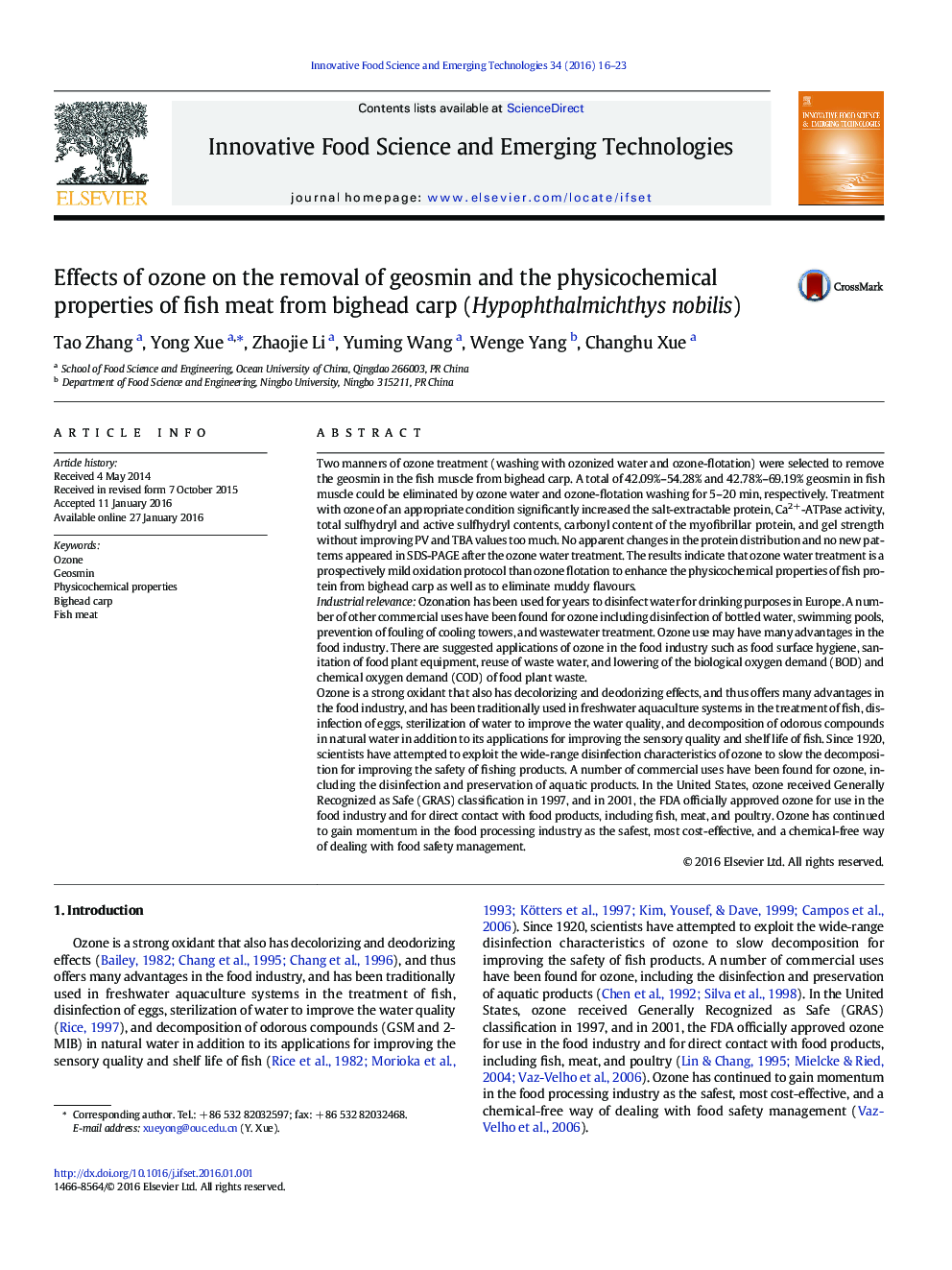| کد مقاله | کد نشریه | سال انتشار | مقاله انگلیسی | نسخه تمام متن |
|---|---|---|---|---|
| 2086352 | 1545532 | 2016 | 8 صفحه PDF | دانلود رایگان |

• Ozone for the removal of geosmin in freshwater fish was effective.
• The physicochemical properties of myofibrillar protein could be enhanced by ozone.
• The mechanism of how ozone-induced oxidation affects the gel structure was shown.
Two manners of ozone treatment (washing with ozonized water and ozone-flotation) were selected to remove the geosmin in the fish muscle from bighead carp. A total of 42.09%–54.28% and 42.78%–69.19% geosmin in fish muscle could be eliminated by ozone water and ozone-flotation washing for 5–20 min, respectively. Treatment with ozone of an appropriate condition significantly increased the salt-extractable protein, Ca2 +-ATPase activity, total sulfhydryl and active sulfhydryl contents, carbonyl content of the myofibrillar protein, and gel strength without improving PV and TBA values too much. No apparent changes in the protein distribution and no new patterns appeared in SDS-PAGE after the ozone water treatment. The results indicate that ozone water treatment is a prospectively mild oxidation protocol than ozone flotation to enhance the physicochemical properties of fish protein from bighead carp as well as to eliminate muddy flavours.Industrial relevanceOzonation has been used for years to disinfect water for drinking purposes in Europe. A number of other commercial uses have been found for ozone including disinfection of bottled water, swimming pools, prevention of fouling of cooling towers, and wastewater treatment. Ozone use may have many advantages in the food industry. There are suggested applications of ozone in the food industry such as food surface hygiene, sanitation of food plant equipment, reuse of waste water, and lowering of the biological oxygen demand (BOD) and chemical oxygen demand (COD) of food plant waste.Ozone is a strong oxidant that also has decolorizing and deodorizing effects, and thus offers many advantages in the food industry, and has been traditionally used in freshwater aquaculture systems in the treatment of fish, disinfection of eggs, sterilization of water to improve the water quality, and decomposition of odorous compounds in natural water in addition to its applications for improving the sensory quality and shelf life of fish. Since 1920, scientists have attempted to exploit the wide-range disinfection characteristics of ozone to slow the decomposition for improving the safety of fishing products. A number of commercial uses have been found for ozone, including the disinfection and preservation of aquatic products. In the United States, ozone received Generally Recognized as Safe (GRAS) classification in 1997, and in 2001, the FDA officially approved ozone for use in the food industry and for direct contact with food products, including fish, meat, and poultry. Ozone has continued to gain momentum in the food processing industry as the safest, most cost-effective, and a chemical-free way of dealing with food safety management.
Journal: Innovative Food Science & Emerging Technologies - Volume 34, April 2016, Pages 16–23